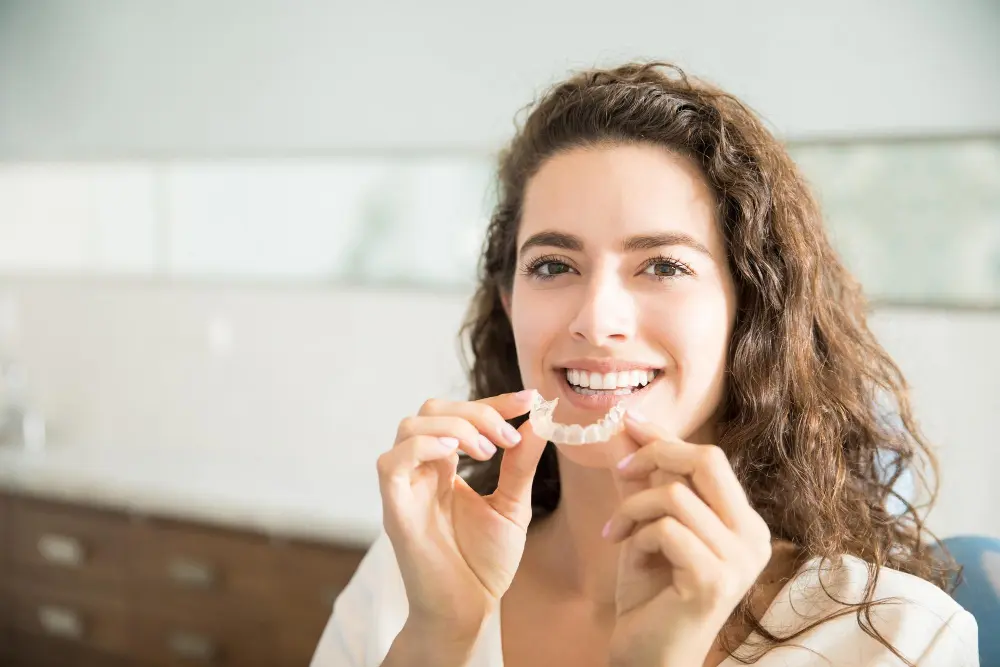4 Steps To Take When Your Invisalign Doesn’t Fit
A lot of people like Invisalign because it straightens teeth in a way that is both comfortable and hard to notice. However, there may be times when your aligners don’t fit as they should. Whether they feel loose, tight, or uncomfortable, it’s essential to address these issues promptly to ensure your treatment stays on track. Here are four steps to take when your Invisalign doesn’t fit.
1. Assess the Situation
Before panicking, take a moment to assess why your Invisalign aligners may not be fitting properly. Here are some common reasons for misalignment:
- Worn or Damaged Aligners: Regularly inspect your aligners for any signs of wear, cracks, or visible damage. Over time, aligners may become worn out due to regular use, which can cause them to lose their snug fit against your teeth. Small cracks or fractures in the aligners can also compromise their effectiveness in shifting your teeth properly, potentially leading to discomfort or delayed progress in your treatment. If you notice any unusual signs of wear or damage, it’s essential to consult your orthodontist for a replacement or guidance on the best steps to take to maintain your treatment’s effectiveness.
- Lost Aligners: If you’ve misplaced your previous aligners, this can impact the fit of your current set, as each aligner is carefully designed to progress your treatment step by step. Missing a set can lead to misalignment and may cause discomfort when you try to move on to the next stage. It’s essential to keep track of each aligner in your treatment plan, and if one is lost, contact your orthodontist as soon as possible. They can guide you on whether to move forward, use the last available set, or order a replacement to keep your treatment on track.
- Incorrect Wear Time: Ensure you’re wearing your aligners for the recommended 20-22 hours a day. Inconsistent wear can cause your teeth to shift, leading to a poor fit.
- Shifting Teeth: Your teeth may have shifted more than expected if you’ve missed wearing your aligners or if there’s been a change in your dental structure.
2. Contact Your Orthodontist
Once you’ve assessed the situation, reach out to your orthodontist or dentist. They can provide professional insight and guidance on how to proceed. When you contact them, be prepared to discuss:
- How long you’ve been wearing the aligners
- Any discomfort or pain you’re experiencing
- Whether you’ve followed the prescribed wear schedule
Your orthodontist may suggest a follow-up appointment to examine your teeth and the fit of your aligners, allowing them to make any necessary adjustments to your treatment plan.
3. Follow Instructions
Depending on your orthodontist’s advice, you may need to take specific actions to get back on track. Here are a few possibilities:
- Wear Your Previous Aligners: If your new aligners don’t fit, your orthodontist may recommend going back to your last set until they can assess your treatment.
- Adjust Wear Schedule: In some cases, your orthodontist may advise you to wear the current set longer to help your teeth shift into the intended position.
- Use Chewies: These small, cylindrical devices can help seat your aligners more effectively. Chewing on them can help push your aligners down into place, improving the fit.
4. Stay Consistent and Communicate
To avoid fit issues in the future, stay consistent with your aligner wear and maintain open communication with your orthodontist. Here are a few tips:
- Maintain a Regular Schedule: Stick to the recommended wear time for your aligners, changing them only when advised by your orthodontist.
- Keep Appointments: Check-ups are important for keeping track of your growth and addressing any concerns right away.
- Report Issues Early: If you notice any discomfort or fitting issues, don’t hesitate to reach out to your orthodontist immediately. If you get involved early, you can stop problems from getting worse later on.
Conclusion
While it can be frustrating when your Invisalign aligners don’t fit as expected, following these steps can help you address the issue and keep your treatment on track. If you’re a Kochi resident and looking for professional guidance, consider consulting with an expert who provides Invisalign in Kochi. Remember, effective communication with your orthodontist is key to achieving the beautiful smile you desire. With diligence and consistency, you’ll be well on your way to completing your Invisalign journey.
Also read:Bergabung dengan Situs Ceme Terbaik: Fitur Terbaru untuk Kemenangan Anda














Post Comment